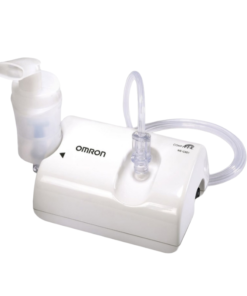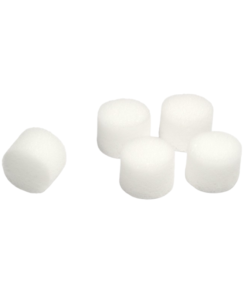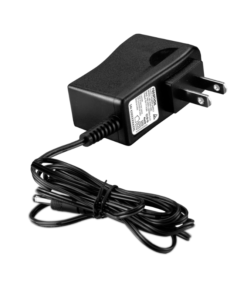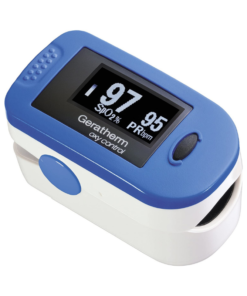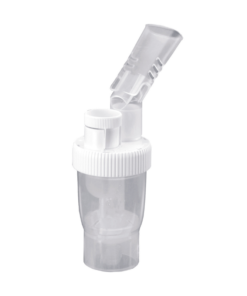Description
Description
The Omron Peak Flow Meter is used to measure your “Peak Expiratory Flow Rate,” (PEFR) which is simply the highest speed you can blow air from your lungs. It helps you to track any changes in your air flow and allows you to check your PEFR discreetly any time you want. The device is used to assist detection of pending asthma attacks, and the dual flow range measures for both adults and children.
You doctor may recommend the use of a Peak Flow meter to monitor changes in your airflow. With recommending the use of a Peak Flow meter, your doctor will also give you a treatment plan that will tell you what action to take when you see changes in your peak flow readings.
With careful use, the Omron Peak Flow Met can be expected to last for two years or for approximately 2,000 uses.
Uses
The Omron Peak Flow Meter is used to monitor lung conditions such as asthma and enables a user-friendly therapy management for both the patient and their doctor. It measures the amount of air that patients can push through their bronchial tubes in a single rapid burst. This peak flow meter is intended for use in a medical facility, such as a hospital, clinic or doctor’s office and in a room of general household. It is intended to be used by adults and children aged 3+ (with the help of their caregivers) who wish to monitor lung function.
Application
How to use the Omron Peak Flow Meter:
• Please read the instruction manual that comes with the Omron Peak Flow Meter before use
• If required (e.g. for children), insert the extra mouthpiece into the meter, if not already fitted. Ensure the pointer is at the bottom of the scale (nearest the mouthpiece)
• Hold the peak flow meter by the handle, ensuring that your fingers are clear of the scale and slot. Do not obstruct the holes at the end of the peak flow meter, or the vents at the side of the mouthpiece
• Stand up if possible and take a deep breath
• Place the peak flow meter between the lips and hold horizontally, closing the lips around the mouthpiece. Blow as hard and as fast as you can – any coughing or spitting into the meter will adversely affect your readings and should be avoided
• Note the number on the scale indicated by the pointer on a piece of paper. If unusual readings are obtained and the meter does not appear broken – seek advice from your healthcare professional
• Return the pointer to the bottom of the scale (nearest the mouthpiece) and repeat the procedure twice more to obtain three readings. Mark the highest of the three readings on your Peak Flow
How to Record Your Peak Flow:
• It is important to keep a record of your peak flow. Three readings should be taken twice a day, first thing in the morning and at bedtime unless otherwise directed by your healthcare professional.
• With a dot, record the highest of the three readings on the Peak Flow Diary, both in the morning and at bedtime, every day
• By joining the dots you can see how your peak flow varies from day to day
• Make sure to measure and note your peak flow if you suddenly become wheezy or breathless at any time of the day or night
Using the Zone Monitoring System:
The use of a 3 zone monitoring system set up like traffic lights uses coloured plastic clips (green, yellow, red) as zone markers and has proven useful to patients monitoring their asthma with peak flow readings.
Once your green, yellow and red zones have been determined, record their values in the Treatment Action Plan.
The general principle of the zone monitoring system is as follows:
• Green Zone, peak flow rate 80-100%, go ahead with normal activities
• Yellow Zone, peak flow rate 50-80%, use caution in your activities. Refer to your treatment plan for actions to be taken
• Red Zone, peak flow rate less than 50%, Medical alert! Seek immediate medical attention
Positioning the Markers:
Set the zone markers on your meter to correspond with the values. For example, if you and your physician or other licenced healthcare professional determine your individual best reading is 500 LPM then your zones and markers will be as follows:
• Green Zone is 400-500 LPM (80-100%). Set the green marker at 500
• Yellow Zone is 250-400 LPM (50-80%). Set the yellow marker at 400
• Red Zone is 0-250 (less than 50%). Set the red marker at 250
How to clean the Omron Peak Flow Meter:
This peak flow meter does not require maintenance (other than cleaning) or calibration for the two years following its first use. At the end of two years, it should be replaced
When not in use this device should be kept in a clean, dry area away from any hazardous substances
It is important to keep your peak flow meter clean when in use. It should be cleaned at least once every six months and thoroughly if it has not been used for some time. The mouthpiece is detachable and should be disinfected before each use using a proprietary disinfectant solution.
• Immerse the peak flow meter in warm (but not hot) mild detergent solution for 2-3 minutes (maximum 5 minutes)
• Agitate the meter to ensure thorough cleaning
• Rinse in clean warm water and shake gently to remove any excess water
• Allow to dry thoroughly before using again



